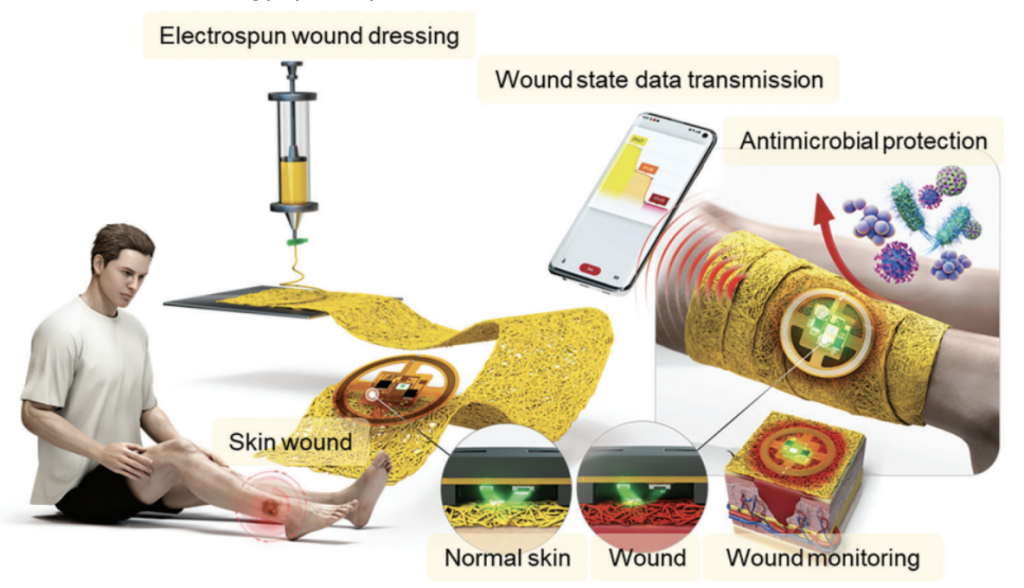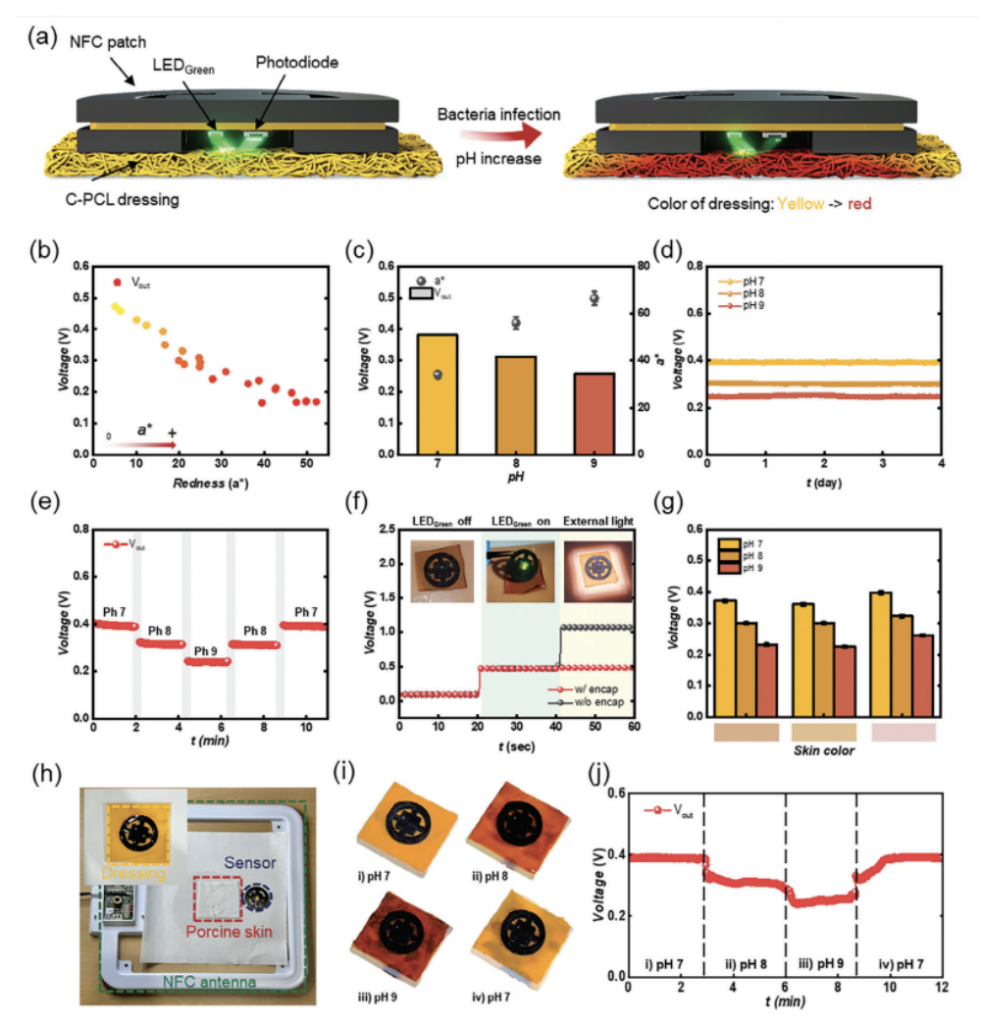Prof. Inkyu Park’s group at KAIST has developed an innovative wound care solution involving a wireless, battery-free, optoelectronic diagnostic sensor integrated with a colorimetric, pH-sensitive dressing. The dressing is composed of a curcumin-polycaprolactone (C-PCL) composite, which offers antimicrobial protection and aids wound healing through its nanofiber structure. The dressing changes color from yellow to red in response to variations in pH, which are linked to wound healing stages. Elevated pH indicates infection or inflammation, while lower pH signifies healing. The colorimetric changes are monitored using an embedded green LED and photodiode system, which captures real-time data on wound status. The NFC-enabled sensor eliminates the need for batteries, offering a lightweight, non-invasive solution that transmits data wirelessly to mobile devices. This allows continuous monitoring of wound conditions, improving diagnostic accuracy and ensuring timely medical interventions. The system is designed for convenience, providing users, even those without medical expertise, the ability to track wound healing through visual and quantitative information. The C-PCL nanofibers enhance air permeability and possess strong antimicrobial properties, especially against pathogens such as E. coli and S. aureus. Additionally, the sensor maintains its functionality regardless of skin type or external environmental factors. This technology is poised to revolutionize chronic wound management, enhancing patient care by enabling real-time wound monitoring, minimizing complications, and improving overall quality of life. The study was published on July 17, 2024 (Wireless, Battery-free, Optoelectronic Diagnostic Sensor Integrated Colorimetric Dressing for Advanced Wound Care, Advanced Functional Materials 34, 2316196 (2024).
“This work is expected to advance wound care through wireless, battery-free sensors that enable real-time monitoring of wound pH, promoting better healing. There are numerous potential applications including comprehensive health diagnostics, wearable sensors for chronic conditions, and personalized medicine tools,” said Inkyu Park, the corresponding author and a professor in the Department of Mechanical Engineering and the KAIST Institute for the NanoCentury at KAIST.
This work was supported by a National Research Foundation of Korea (NRF) grant funded by the Korean government (MSIT), the Technology Innovation Program funded by the Ministry of Trade, Industry & Energy (MOTIE, Korea) and an Alchemist Project grant funded by Korea Evaluation Institute of Industrial Technology (KEIT).


Prof. Inkyu Park, Mr. Seokjoo Cho, Dr. Ji-Hwan Ha Dept. of Mechanical Engineering, KAIST
E-mail: inkyu@kaist.ac.kr
Homepage: http://mintlab1.kaist.ac.kr






